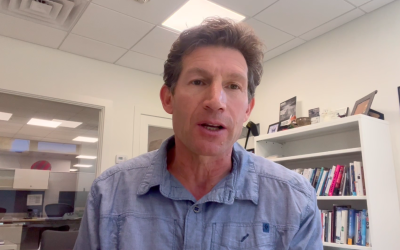Digital technology and online platforms have disrupted the communication landscape. As a result, promotion through visitor (or consumer) engagement has become essential to effective destination marketing.
“DMOs were originally developed as an intermediary for a marketplace where suppliers controlled the flow of destination information, the development of products as well as the related sales promotion and distribution channels. Today, technology has effectively rebalanced the marketplace. Consumers and travel professionals now have access to the same information as destination marketers and bypass established legacy travel information channels with multiple intermediaries and hidden commissions. Consumer trust of promotional messaging is at an all-time low, elevating the position of peer reviews and crowdsourcing as primary purchase influencers.”
– Destination Marketing Association International’s DestinationNEXT report
Destination Marketing Association International (DMAI) recently studied more than 327 destination marketing organizations to identify the trends that will have the greatest impact on their future strategy. Notably, most of the top 20 trends from the DestinationNEXT report stem from technological disruption in communication. Meanwhile, many respondents outlined response strategies that identify a need to engage differently with visitors and residents. Based on these response strategies, DMAI has outlined three “transformational opportunities” for DMOs, one of which is “Dealing with the new marketplace: Broadcast to engagement.”
The fact is that broadcasting a destination’s brand message to a mass audience will no longer impact visitation in the most meaningful way; however, the industry is beginning to realize that this change can also mean good news for destinations. Digital disruptors like social media, mobile devices and accessible information enable destination marketers to engage with consumers and stakeholders on a larger scale than ever before.
What exactly is consumer engagement?
Consumer engagement has become an all-encompassing term for a style of marketing that involves customers throughout the entire marketing process. It describes the ways in which consumers interact with a company, a brand or one another. It uses permission-based, two-way communication in place of more traditional, broadcast-based, one-way messaging. It’s about pulling stories from consumers instead of pushing them, and it’s about inbound messaging rather than outbound.
The range of stories consumers can share about a brand with their offline and online networks are as vast as the number of experiences possible in a destination. The abundance of perspectives creates a powerful opportunity, as destination marketing organizations can inspire a high volume of positive stories from their consumers.
Why is consumer engagement valuable?
Consistent two-way communication enables marketers to create value for the consumer at each stage of the customer journey. By listening to their customers and sharing helpful or entertaining information where it’s needed most, destinations can support their consumers and foster deep, long-lasting connections with their audience. Another added benefit of the digital era is the ability to easily connect with consumers after their visit. In doing so, destinations can continue their consumer relationships and empower their most passionate fans to act as advocates.
The conversational approach also provides the DMO with valuable feedback it can use to continually improve the visitor experience. Ultimately the dialogue will earn more positive word of mouth, which will, in turn, generate more conversations and still more opportunities to improve the experience, which will encourage repeat visitation.
How does consumer engagement happen?
Keep in mind that consumer engagement can take place through many channels. While social media, email marketing and website content create huge opportunities, it’s important to realize that engagement can take place effectively offline as well. Combining online interaction with offline experiences can be a powerful a way to connect with an audience, as Tourism and Events Queensland’s innovative “Surprise and Delight” listening campaign demonstrates. It’s also important to remember that consumer engagement isn’t always initiated by the brand, making product development more important for destinations than ever. If your destination can deliver an experience that results in positive word of mouth, much of your hard work will be done, as visitors and residents will do all of the promotion for you.
A profound statement from the Harvard Business Review in 2003, perhaps says it best: “The only path to profitable growth may lie in a company’s ability to get its loyal customers to become, in effect, its marketing department.”
Consumer engagement generates valuable new opportunities for destinations and is often a much better investment than traditional push advertising. While it may be a big shift for many long-time destination marketers, it’s a necessary one. Your role as a destination marketer is to lead your organization and the industry into the new and exciting future.
Related reading on industry collaboration: Design thinking for the modern DMO
Related reading on measuring your investment: What’s the ROI of social media? Announcing the Potential on Investment (POI) Whitepaper









0 Comments